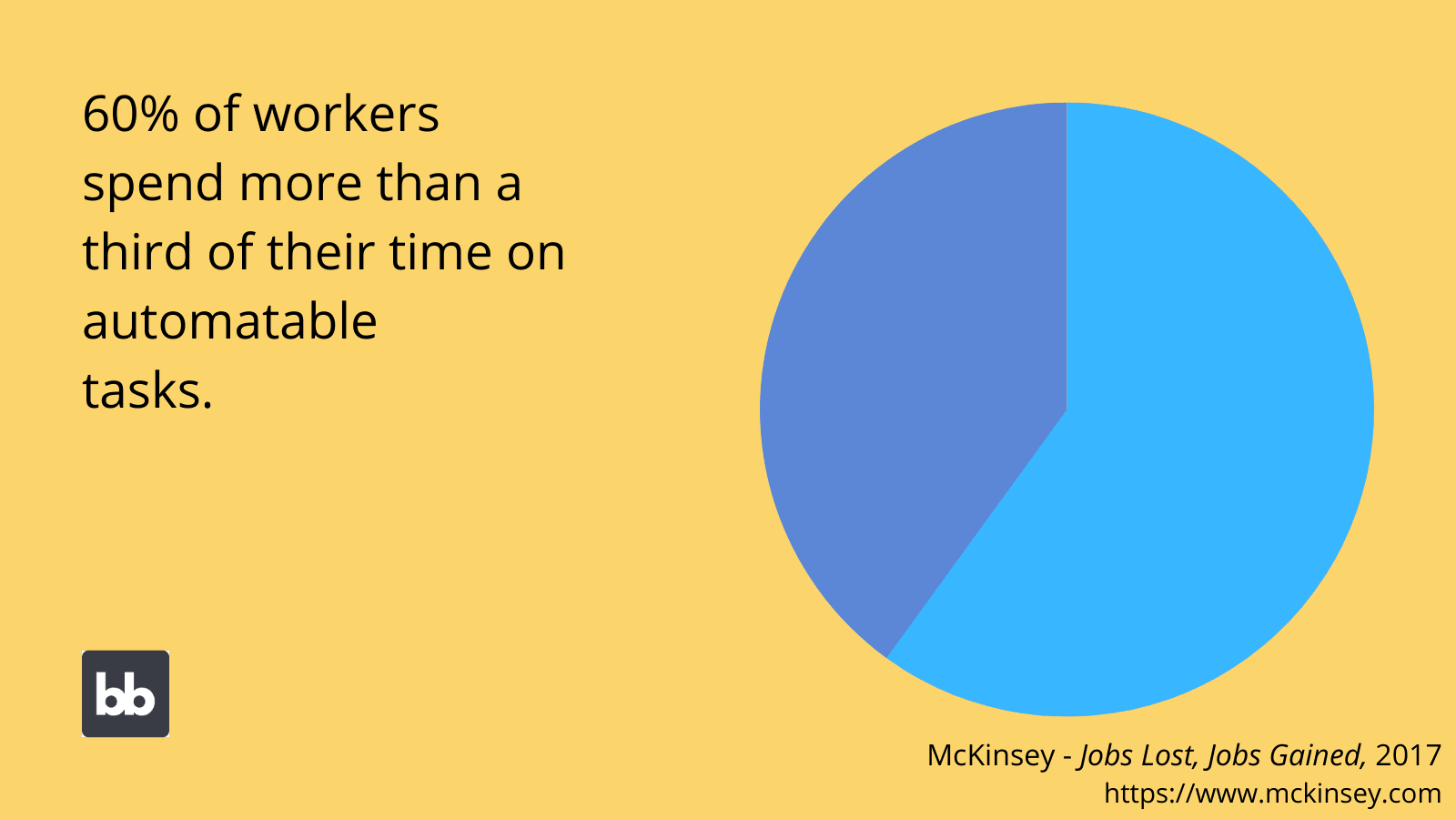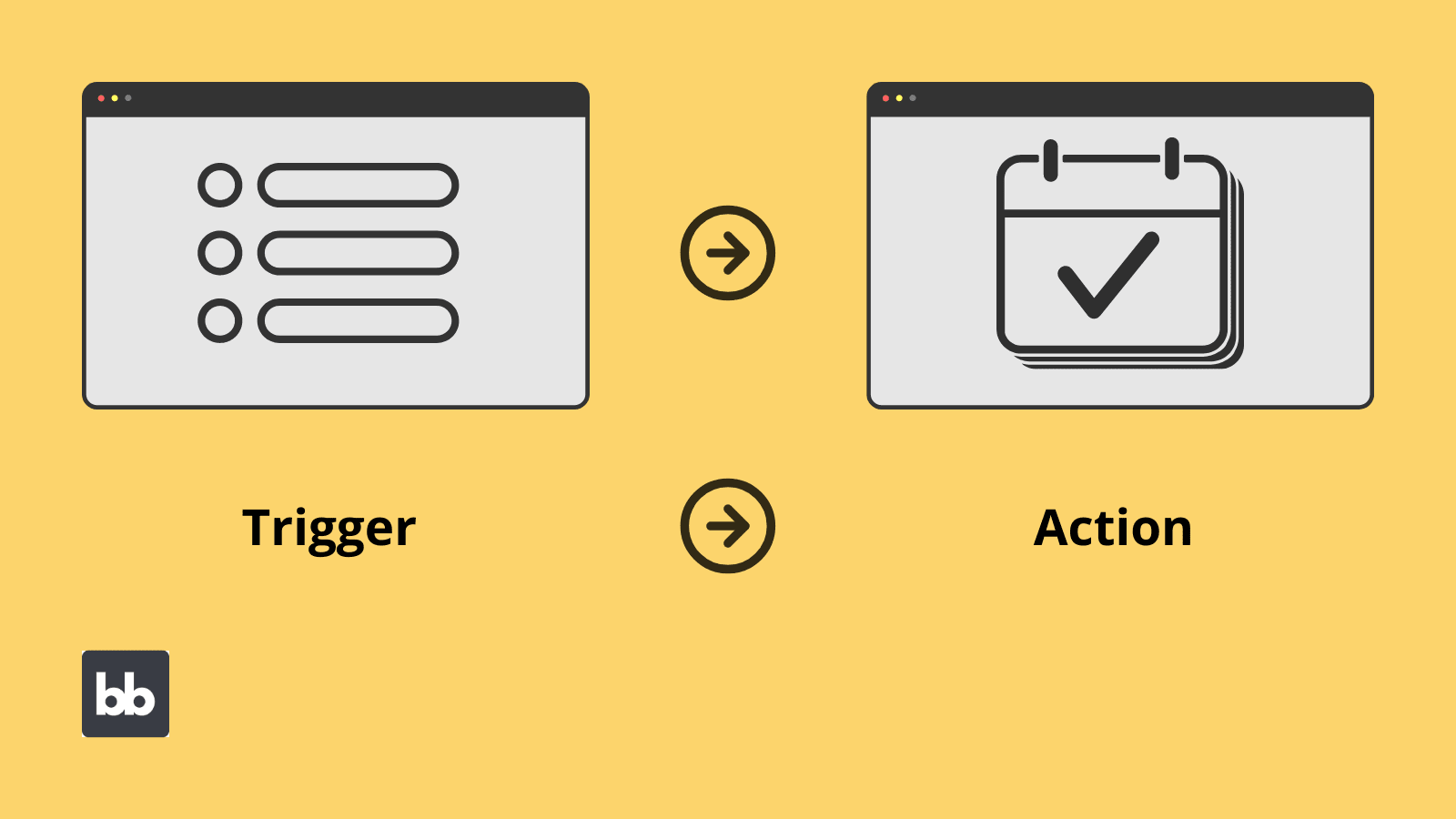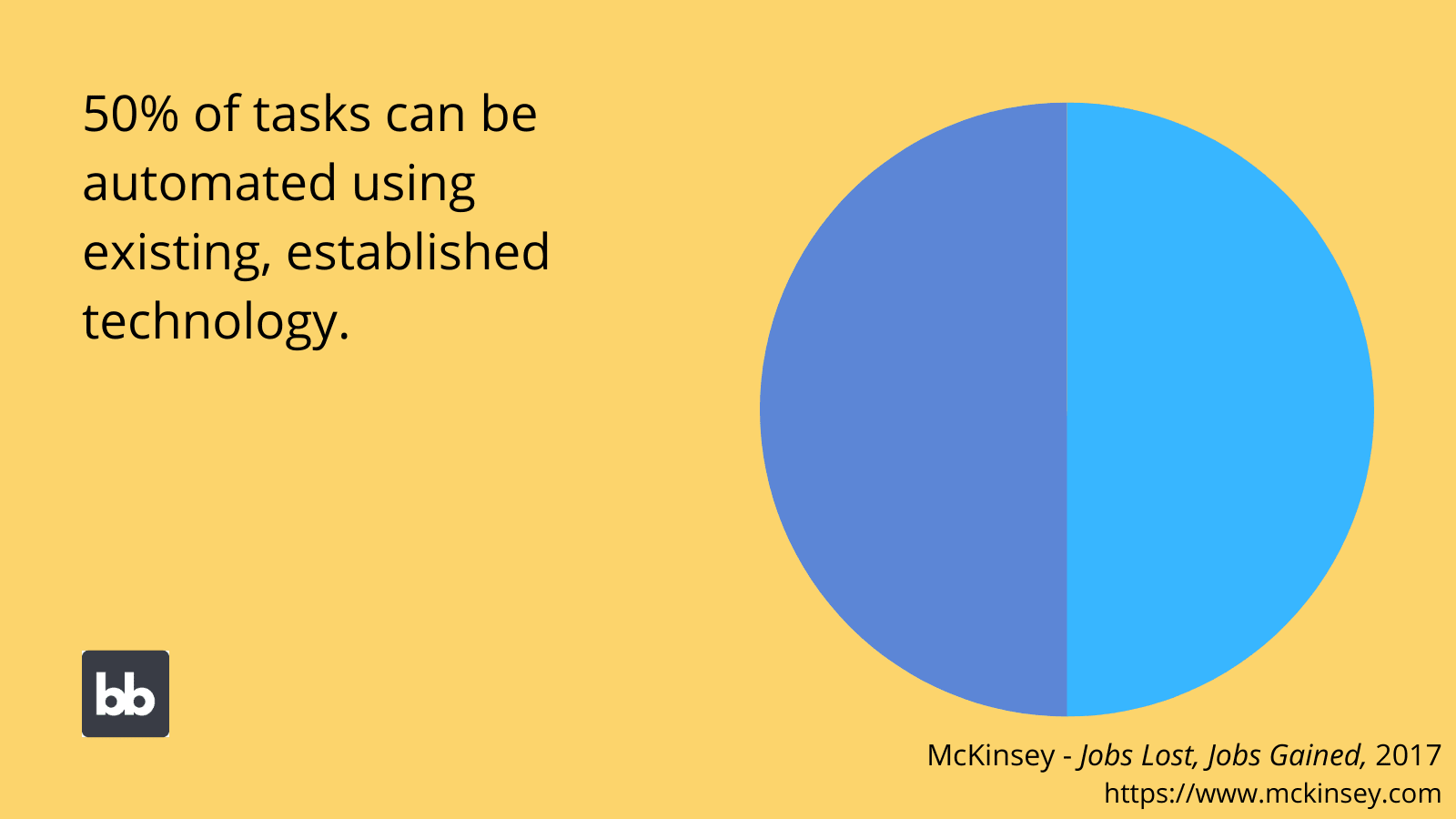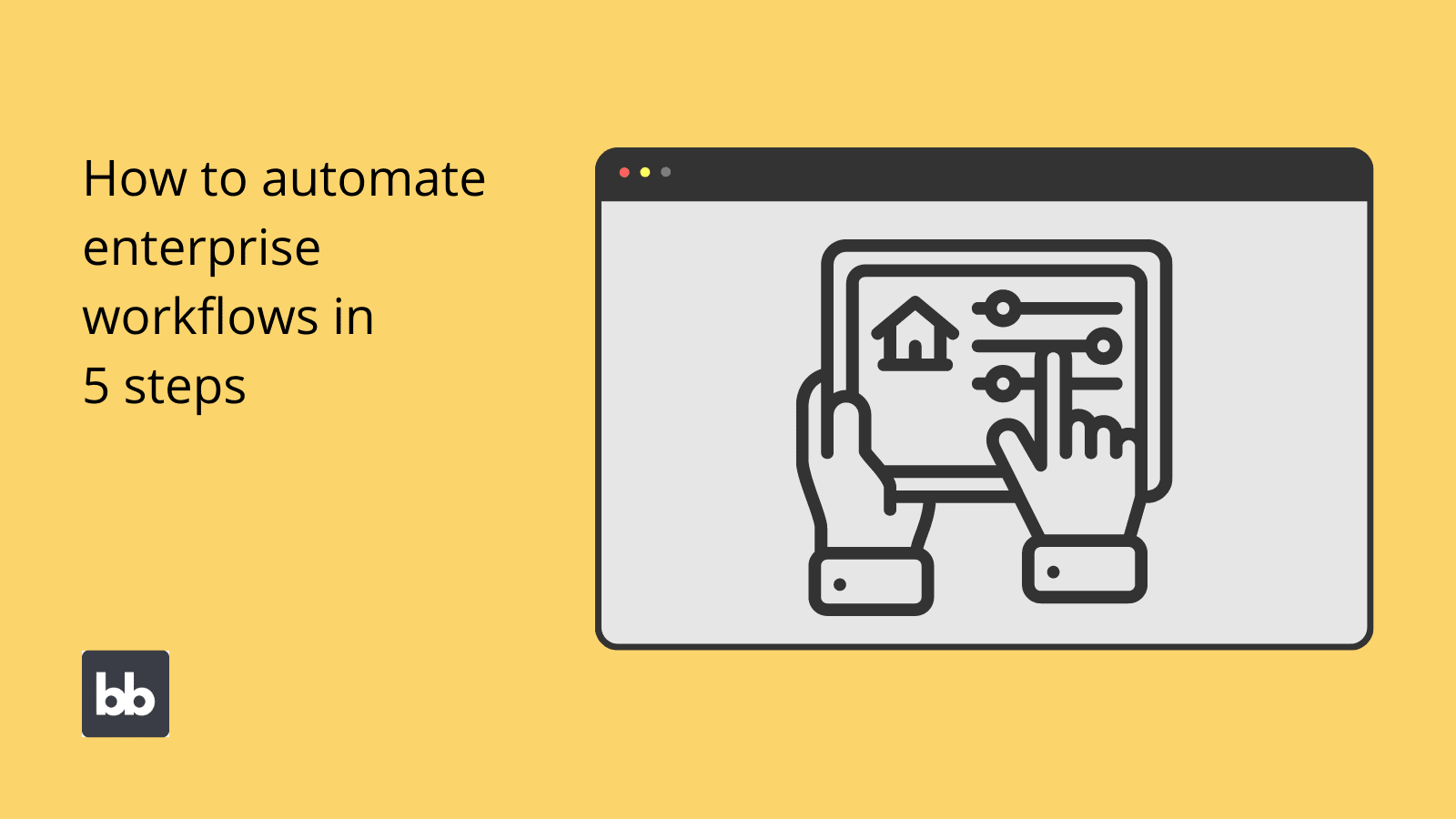Enterprise Workflow Automation
For large, international organizations, efficiency is everything. However, this can’t come at the expense of accuracy, compliance, and security. Enterprise workflow automation is the key to balancing these concerns.
Of course, enterprises know this.
The real question is how you can implement automation. Or, more specifically, how can enterprises most cost-effectively create automated workflows?
That’s exactly what we’re going to cover in this guide.
These days, automation can be the difference between remaining competitive or losing your edge, especially for massive, internationally trading organizations.
Let’s start with the basics.
What is enterprise workflow management?
For enterprises, workflow management is all about ensuring that large groups of employees can coordinate and complete defined tasks, in the most efficient way possible.
This means using different techniques to implement business rules for how data and other resources flow from one user to another, in order to complete the task at hand.
In other words, enterprise workflow management is a collection of strategies that are used to make your employees’ daily work as easy, cost-effective, and scalable as they can be.
Specific strategies that enterprises use to manage workflows include:
- Using dedicated software packages for different workflows.
- Optimizations within your existing software stack.
- Integration tools.
- Workflow management software.
- Low-code solutions.
- Automation platforms.
- Non-technical workflow optimizations and management strategies.
In reality, you’ll need to use a combination of these.
It’s worth noting too that automations play a role in all of these strategies, to differing degrees. That is most non-dedicated automation tools will offer some amount of functionality for this.
Why do enterprises need automation?
Automation plays a critical role in enterprise workflow management. Of course, these days businesses of all sizes benefit from automating processes. So why is this a particular concern for the largest companies?
The key thing here is that the core problems that automation solves are more acute within enterprises.
Let’s consider a few of these.
The first, and perhaps most obvious, is the reduced labor costs that automation brings. In a large organization, with tens, or even hundreds, of thousands of employees, this effect is naturally amplified.
Besides having large numbers of employees, enterprises often have high staff turnover, especially for administrative roles. This creates disruption, and excessive training costs to get new employees up to speed. Automation helps to mitigate this by simplifying tasks.

Another key benefit of automation is improved accuracy within a given workflow. That is, by reducing the number of actions users can take, you can greatly reduce the scope for human error.
In an enterprise context, this is particularly important, given the scale that different processes occur at. For example, if you have a large team of data entry staff, it’s all the more important that user inputs are as accurate as possible.
Finally, automation helps to improve oversight and accountability within enterprise workflows.
With automated workflows, enterprises have a clear paper trail of different user actions, as well as the effects and outcomes of these. This is critical, as enterprises have a particular need to monitor actions and process adherence across large teams.
How does enterprise workflow automation work?
The next question is how does enterprise workflow automation actually work in practice? As we hinted at earlier, there are a range of different tools that can be used here. However, each of them has several things in common.
That is, the actual theory behind how automation works doesn’t change.
The key, in any case, is to define the business rules that govern different workflows and enforce them programmatically. We’ll explore how to do this in more detail towards the end of this article.
For now, though, we’re simply concerned with the theory.
The first step is to break each workflow down into its constituent tasks. That is the sequence of events that need to happen to reach the end goal, including the various actions that employees can take along the way.
Once this is in place, you can flesh out the business rules and logic that underpin each task.
Specifically, we can break each task into two elements:
- The trigger - The event or condition that determines that the task should go ahead.
- The action - What happens when the trigger condition is met.

Triggers can be based on system conditions, user actions, database queries, external events, time-based rules, or a range of other factors. Actions can be simple tasks or a more complex series of nested events.
Once you understand the logic behind your workflows in the abstract, you can begin to implement this with a range of tools. Again, we’ll return to this a little bit later.
What kind of enterprise workflows can be automated?
It’s also worth considering which kinds of workflows are suitable for automation. This is particularly important in the context of enterprises, where processes are generally more complex and multi-actored.
That is, in large organizations, any given process is more likely to include a greater number of users and steps.
Enterprise workflow automation is viable across all business verticals and departments.
The key to deciding if a workflow is automatable is identifying repetitive tasks. The more often a manual task is carried out, the more you stand to gain from automation.
It’s also important to consider the complexity of the decision-making involved in any given task.
That is, whether it is representable in automation rules.
To see how this works, let’s consider two different scenarios.
First, you might have a task that’s governed by clearly defined business rules, involving the same variables each time. Employees, therefore, don’t need to exercise any discretion. This would be relatively easy to express as an automation rule.
For example, leave requests, invoice submissions, device rentals, basic communications, incident reporting , or other relatively static workflows.
On the other hand, you might have workflows where employees need to exercise more discretion. This includes more complex, contextual decision-making. For instance, disciplinary processes, later-stage recruitment, or other more irregular processes.
In these cases, you’ll still be able to automate certain discrete tasks, but wholesale automation across the entire workflow might be more difficult, as human decision-making isn’t easily reproduced programmatically.
For more information, check out our ultimate guide to workflow automation .
Enterprise workflow management solutions
Next, we can begin to think about the specific tools that are available for enterprise automation. These days, countless different kinds of platforms offer some degree of automation functionality, so the options are fairly varied.

Here are the most common categories of tools you can choose from.
Dedicated workflow tools
The most obvious option is using dedicated workflow management tools. As the name suggests, these are specifically designed to optimize workflows, of all kinds.
Generally, these are based around interfaces for visualizing the different tasks involved in a given process, using flowchart diagrams. One obvious benefit of these tools is that it’s easy to map out how resources should flow between tasks, at least in the abstract.
This means that dedicated workflow management tools typically offer high levels of usability, especially for non-technical users.
However, it’s worth considering that these kinds of tools are aimed at managing the widest range of different processes. This is a sort of one-size-fits-all approach. As such, you might find them lacking in flexibility or certain functionality that you require for specific workflows.
Automations, data source options, and interface-building features can also be comparatively limited.
Custom solutions
Of course, enterprises also have the option of creating custom solutions to manage workflows, often leveraging in-house development teams. Or, alternatively, with external developers.
In either case, the benefits are fairly obvious. For one thing, custom builds can all but guarantee the exact features and functionality that you require for any given workflow. At least, within the realms of possibility.
However, the downsides here are clear too.
Custom solutions are costly to build and maintain, even if you have the luxury of an in-house team. At least, that is, with traditional development tools or where solutions must be built from scratch.
Because of this, you’ll need to analyze the cost and benefits of building custom solutions for individual workflows, as relying on these across the board might not be a viable option financially.
As we’ll see in a minute low/no-code tools are changing this calculation.
SaaS platforms
Nowadays, we also have the option of using different SaaS platforms to manage specific workflows. In fact, there are SaaS tools out there for just about any business process you can imagine, from invoicing platforms to procurement management software.
Typically, these also offer a degree of customization, automation, and integration.
However, there are a few additional concerns that enterprises must be cognizant of when relying on SaaS platforms.
These include additional security needs, licensing for large numbers of users, complex compliance requirements, and long-term support. Anyone who’s ever tried to get sign-off from the IT department on a new application can tell you how difficult this is.
Even when a tool makes it through the vetting and approval process, SaaS platforms can still be a massive resource sink. After all, each one generally only covers a single set of processes.
Combine this with per-user, monthly licensing, and costs can quickly snowball.
Check out our in-depth guide to IT process automation .
Low-code development
These days, more and more enterprises are turning to low-code tools to automate workflows. Low-code development offers a more cost-effective alternative to traditional custom-built tools for managing workflows.
Low-code is all about making developers’ lives faster and easier, as well as empowering non-technical employees to build their own applications.
In the specific context of enterprises, low-code development is a popular option, as IT departments must only vet one vendor, for employees to build a wide range of different automation solutions.
We’ll cover some of the more specific reasons that enterprises love Budibase towards the end of this article.

How to automate enterprise workflows in 5 steps
Now that we have a better understanding of the different automation tools available to enterprises, we can consider the actual process of using these. That is, the specific steps that need to be taken to put these tools to use effectively.
After all, this is as much an operational issue as it is a technical one.
With that in mind, here are the five core steps you can follow to automate enterprise workflows.
1. Set goals
The first step is to decide what you actually want to achieve with your automation project. It goes without saying that you want your workflows to be more efficient, cost-effective, and accurate.
However, it’s important to have a more concrete, quantifiable goal in mind.
That is, you should be able to put a concrete figure on the savings you expect your automations to create, in financial, temporal, or human terms. Of course, these are all interrelated.
For example, cutting the number of users needed to complete a given task will also save you on labor costs.
This stage is critical, both in terms of gaining sign-off for your approach, and for giving you a benchmark to measure your success against.
2. Define business rules
Once you know what you want to achieve, you can begin to lay out the business rules that will govern your automations.
Remember that earlier we said that any automation can essentially be broken down into a trigger and an action. That is the conditions that initiate your automations and what actually happens when these are met.
We need to do this for each constituent task within your workflows.
We’ve also created an in-depth guide to workflow analysis .
Let’s take an example to see what this means in practice.
Say you want to automate your employee onboarding process. This involves a variety of tasks, to bring your new hires from when they accept your job offer, all the way up to passing their probation.
We don’t need to go into much detail about the tasks themselves for the purposes of this example. The key thing is that there’s a predefined sequence of steps that they must complete.
So, when they initially accept your offer, a new employee entity is created. This entity has a series of boolean attributes, representing whether or not they’ve completed each onboarding task.
When the employee completes one of these tasks, the next one in the sequence is automatically scheduled, and the employee is notified, providing instructions for what they need to do and when.
3. Assign competences
This step is particularly important in an enterprise context. The thing is that since large organizations are more likely to have vast numbers of users working on a given workflow, you’re also more likely to need a systematic way to assign permissions for different actions.
Here’s a simple example.
Say you had an automated system for employees to request different resources. You’d want to permit any employee to create a new request but reserve the ability to approve these to a limited number of competent employees.
As such, you’d need to create two distinct user roles.
These are defined groups that you place users into, depending on their competencies within a given workflow. Roles can then be used to determine the exact screens, functions, data, and components that assigned users can access.
Check out our ultimate guide to role-based access control to find out more.
4. Create automations
With the theory out of the way, it’s time to start actually implementing your automation rules. Of course, the practicalities of how you go about this will depend greatly on the tools you decide to leverage.
In any case, the core task here is translating your business rules into actual systems.
The first step is to operationalize your triggers. That is, to relate them to computable values, that automation rules and conditions can be built around.
With these in place, you can define the exact flow of events that should be initiated when a trigger condition is met. Check out our docs to find out more about how this works within Budibase.
5. Monitoring and testing
Finally, it’s time to test your automations before they can be rolled out in the real world. There are two levels to this:
- Verifying that the inputs and outputs at each automation stage match up with your expectations.
- Testing that the automation has the desired end result.
Naturally, these both work towards the same goal.
Once you’ve put your new automations into place, it’s also essential that you monitor them on an ongoing basis. Specifically, it’s vital to monitor both how users interact with your solutions, and whether these interactions lead to the expected results.
You’ll also want to measure the impact of your automation projects, against the goals that you set out earlier.
After all, continuous optimization and refinement is the reality of enterprise workflow automation.
Budibase for enterprises
Enterprises around the world choose Budibase to manage, optimize, and automate workflows. Our leading low-code platform offers external data support, optional self-hosting, custom RBAC, and free SSO, across all of your tools.
There’s never been a faster, more cost-effective way to build enterprise-grade automation solutions.
Take a look at our product overview to find out more.
We also offer a range of support packages and SLAs for enterprise customers. Check out our pricing page for more details.